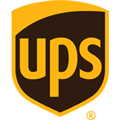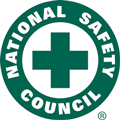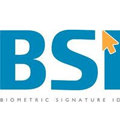3 Ways We are Tricked into Cyber Attacks
So just how are hackers able to penetrate all these huge businesses? Look no further than employee behavior—not an inside job, but innocent employees being tricked by the hacker.
 A recent survey commissioned by Intel Security reveals that five of the top seven reasons that a company gets hacked are due to employee actions.
A recent survey commissioned by Intel Security reveals that five of the top seven reasons that a company gets hacked are due to employee actions.
One of the things that make it easy to trick employees into giving up critical information is the information employees share on social media about their company.
People just freely post things and tweet all day long about company matters or other details that can be used by a hacker to compromise the company. What seems like innocuous information, such as referring to a company big wig by their nickname, could lead to social engineering (tricking users into believing the request is legitimate so the user gives up sensitive information).
Between social media and the golden nuggets of information on Facebook, Twitter, LinkedIn and other platforms, hackers have a goldmine right under their nose—and they know it.
3 Key Pathways to Getting Hacked
- Ignorance. This word has negative connotations, but the truth is, most employees are just plain ignorant of cybersecurity 101. The survey mentioned above revealed that 38% of IT professionals name this as a big problem.
- Do not click on links inside emails, regardless of the sender.
- Never open an attachment or download files from senders you don’t know or only know a little.
- Never visit a website on the job that you’d never visit in public. These sites are often riddled with malware.
- Gullibility. This is an extension of the first pathway. The more gullible, naive person is more apt to click on a link inside an email or do other risky tings that compromise their company’s security.
- It’s called phishing(sending a trick email, designed to lure the unsuspecting recipient into visiting a malicious website or opening a malicious attachment. Even executives in high places could be fooled as phishing masters are truly masters at their craft.
- Phishing is one of the hacker’s preferred tools, since the trick is directed towards humans, not computers.
- To check if a link is going to a phishing site, hover your cursor over the link to see its actual destination. Keep in mind that hackers can still make a link look like a legitimate destination, so watch our for misspellings and bad grammar.
- Oversharing. Malicious links are like pollen—they get transported all over the place by the winds of social media. Not only can a malicious link be shared without the sharer knowing it’s a bad seed, but hackers themselves have a blast spreading their nasty goods—and one way of doing this is to pose as someone else.
- Be leery of social media posts from your “friends” that don’t seem like things they would normally post about. It could be a hacker who is using your friend’s profile to spread malware. Really think…is it like your prude sister-in-law to send you a link to the latest gossip on a sex scandal?
- Don’t friend people online that you don’t know in real life. Hackers often create fake profiles to friend you and then use their network of “friends” to spread their dirty wares.
- Take care about what you post online. Even if your privacy settings are set to high, you should think that when you post on the Internet, it’s like writing in permanent ink—it’s forever. Because did we all really need to know that time you saw Kanye from afar?
All of us must be coached and trained to keep ourselves and our workplaces safe, and that starts with practicing good cyber hygiene both at home and at work.
Robert Siciliano is an Online Safety Expert to Intel Security. He is the author of 99 Things You Wish You Knew Before Your Mobile was Hacked! Disclosures.


































